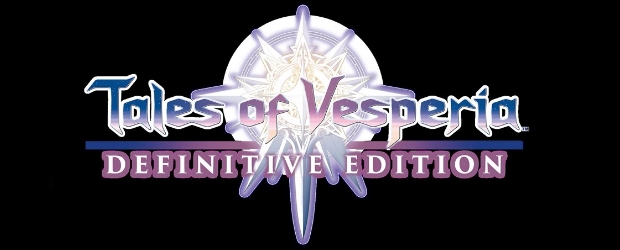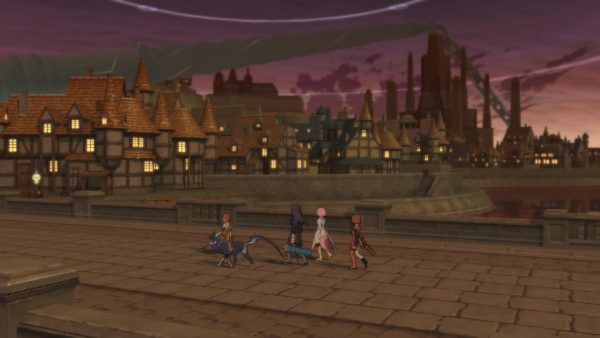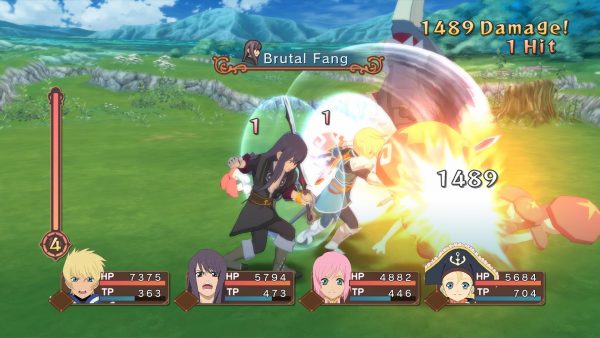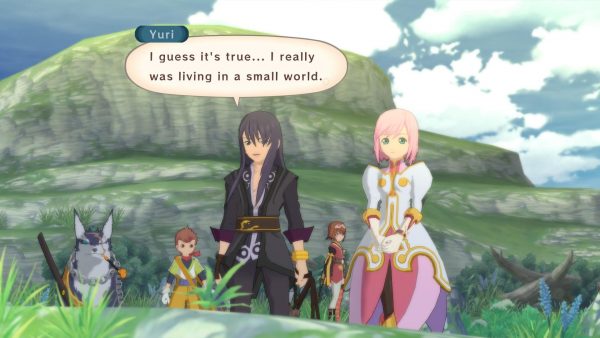Switch to: German
When Tales of Vesperia was released in Japan for the PS3 back in 2009, fans assumed that a Western release would follow not long after. The 360 version had just been released worldwide a few months prior, so it seemed likely that it wouldn’t take too long for us to be able to experience an updated version of an already great JRPG. Well, here we are 10 years later, and for the most part this was worth the wait.
If you ask someone who’s played Tales of Vesperia what their favourite aspect of the game is, it’s highly likely that they’ll mention the main cast of characters. Yuri Lowell was a different sort of JRPG protagonist 10 years ago, especially for the Tales series. He’s not afraid to break the law to get what he wants, and isn’t naive when it comes to understand how the world works. That’s not to say that he doesn’t develop as a character during the story, but he’s still a breath of fresh air compared to the younger and more generic heroes of other games.
As for the story, it does still fall back on some familiar tropes every now and then even with a unique protagonist and it’s not too long before you end up having to save the world. Thankfully character interactions make up for any shortcoming in the plot, as the rest of the playable characters have their own interesting backstories and relationships. Yuri’s friendship with the straight-laced knight Flynn leads to some of the best scenes in the game, as they both have their own way of handling situations.
The Tales games have always been known for their real-time battle systems, and Tales of Vesperia has one of the best in the series – once you’ve made it past the first few hours… Characters have access to a basic string of attacks that change depending on the direction your press, that can be chained into special moves called artes. Combat is initially very basic and can feel clunky when you’re lacking most of each character’s moveset. This is made more apparent by some harsh boss fights early on.
After a few hours you finally start to have a decent amount of moves at your disposal. Artes are learned as you level up, but abilities such as backdashing and magic blocking are instead learned from weapons. It’s an interesting system that makes each new weapon feel unique, but it can be annoying having to use weaker equipment just to learn a new ability. It would have been better if you started off with a few more abilities to keep earlier battles from being less fun.
Of course, for many the most interesting part of this re-release is the previously exclusive PS3 content. From a story standpoint, the new cutscenes add some extra depth to the world of Vesperia and its characters. There is also a lot more voice acting compared to the 360 version, including fully voiced main scenes and skits. Unfortunately not every voice actor made a return for the Definitive Edition, most noticeably Troy Baker who didn’t reprise his role as Yuri. His replacement is serviceable, but for some reason the old voice acting is still used in conjunction with the newly voiced scenes. There are characters other than Yuri that changed voice actors, but having the main character’s voice change drastically between scenes is incredibly jarring. It’s a shame since Vesperia had an excellent English cast, but this change makes it harder to recommend it over the more consistent Japanese audio.
On a more positive note, Flynn and pirate Patty are great additions to the playable cast and each have their own unique playstyles. Flynn was a character that could only be used once during the entirety of Vesperia on 360, so finally being able to play him is an enjoyable experience. He’s easy to use from the start, and offers a mix of physical and magic attacks that can lead to some interesting combos. Patty instead relies on a variety of RNG based moves and honestly feels completely different to any other action RPG character we’ve used before. On top of these new playable characters, the remaining party members have also received some new moves and tweaks to improve the overall balance of the game, though some characters like Yuri will still feel very familiar.
While the additional content taken from the PS3 version is mostly great, the PC port – and the overall remaster – is a somewhat mixed bag. Visually, Tales of Vesperia: Definitive Edition looks decent, mainly thanks to the colourful character models. Environments are far less impressive, having received little or no texture updates. Cutscenes also suffer from an overuse of bloom and other effects, something that was also present in the original release but is more noticeable here. Battles are still where the game looks best, due to the smooth attack animations and effects though even here some enemies look a little bland compared to modern RPGs. The biggest problem however is specific to the PC version: micro stutter. Regardless of how high your framerate is, or even if VSync is enabled, there are noticeable stutters that happen far too frequently. This leads to the game’s framerate feeling inconsistent, even when it’s running at a constant 60 FPS. For some this may be a minor issue, but it can be very distracting after playing for an hour or two.
Conclusion
Revisiting Tales of Vesperia after all these years has been an interesting experience. It’s still a great JRPG, but certain areas of the game have started to show their age, and the updated localisation isn’t perfect. Overall though, this is a far more impressive remaster than Bandai Namco’s previous attempt with Tales of Symphonia, and we can only hope that this is the first of many updated releases for the Tales series.






